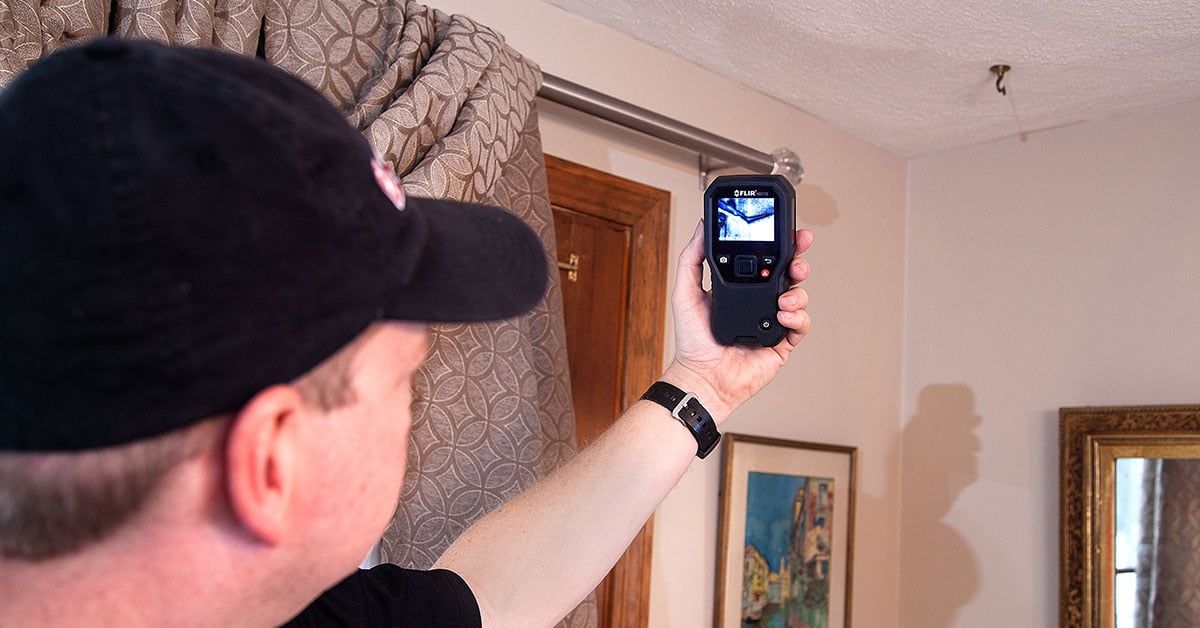How to Check If Your House Has a Concealed Leakage
How to Check If Your House Has a Concealed Leakage
Blog Article
Are you looking for insight around Top leak detection hacks?

The moment you discover a leak, calling your plumber for repairs is the most effective option. Nonetheless, some tiny water leaks may not be visible. Here are some hacks that aid if you can not discover it with your naked eyes.
Early discovery of dripping water lines can mitigate a prospective catastrophe. In addition to conserving you cash, it will minimize the irritation as well as disappointment.
Inspect Water Usage
If you find sudden adjustments, regardless of your usage being the same, it implies that you have leakages in your plumbing system. A sudden spike in your bill suggests a fast-moving leakage.
A consistent increase every month, even with the very same behaviors, reveals you have a slow leakage that's likewise slowly intensifying. Call a plumber to completely examine your building, particularly if you really feel a cozy location on your floor with piping underneath.
Examine the circumstance and also check
Homeowners must make it a practice to examine under the sink counters as well as also inside closets for any kind of bad odor or mold and mildew development. These two warnings indicate a leak so timely interest is called for. Doing routine assessments, even bi-annually, can save you from a significant problem.
Check Out the Water Meter
Every home has a water meter. Checking it is a guaranteed manner in which helps you discover leakages. For beginners, shut off all the water sources. Make certain nobody will certainly flush, utilize the tap, shower, run the washing machine or dishwashing machine. From there, go to the meter as well as watch if it will change. Because no one is using it, there should be no activities. If it relocates, that indicates a fast-moving leakage. Furthermore, if you discover no changes, wait an hour or 2 and check back once again. This suggests you might have a sluggish leak that can also be below ground.
Asses Outside Lines
Don't fail to remember to check your exterior water lines as well. Should water seep out of the connection, you have a loose rubber gasket. One tiny leakage can lose tons of water and increase your water expense.
Do a Food Coloring Test
30% comes from bathrooms when it comes to water consumption. Test to see if they are running appropriately. Drop flecks of food shade in the storage tank as well as wait 10 minutes. If the color in some way infiltrates your dish during that time without flushing, there's a leak in between the container and dish.
Inspect for discolorations and also compromising as most home appliances and pipes have a life span. If you think dripping water lines in your plumbing system, do not wait for it to escalate.
The minute you discover a leak, calling your plumber for fixings is the ideal solution. Some little water leakages may not be noticeable. Inspecting it is a proven way that aids you discover leaks. One small leakage can waste heaps of water and also spike your water costs.
If you suspect leaking water lines in your plumbing system, don't wait for it to escalate.
How to Know If Your Home Has a Hidden Leak
Water Meter Reveals Inexplicable Water Usage
If you’d like to test whether or not there’s a leak somewhere in your home, you can do this using your water meter. Here is how to conduct the test:
Don’t use any water in your home for at least 30 minutes; this also means not turning on faucets or water-using appliances.
Go outside, and check your water meter for activity.
If your water meter shows that there was activity, even though no one was using any water, this proves that there is a leak in your home.Visible Mold or Mildew Growth
Leaks behind walls create moist, dark environments that allow mold and mildew to grow and thrive. Eventually, you might see mold growth forming on the wall closest to a hidden leak.
If mold is growing in an area that receives a high amount of moisture, such as a bathroom, it may simply be an indication that better ventilation is needed. However, if you see mold growth on a wall or the ceiling in an area where you would not expect, you probably have a hidden leak.
Musty, Mildew Odor
Sometimes you might not be able to see the mold or mildew that is growing as a result of a leak. However, the smell can give the problem away just as easily. If you catch a whiff of something musty, there’s a good chance that old water is collecting somewhere in your home that you can’t see.
Stained/Warped Walls, Ceilings, or Floors
When your home soaks up water, a variety of red flags can become visible, including ceiling stains, bubbling drywall, warped walls, and sagging floors. While these issues can be caused by excess humidity, they can also be signs that a pipe or plumbing connection has started leaking behind your walls.
Inexplicably High Water Bill
After a while, you get a general sense for what your water bill should be. If you own a pool or sprinkler system, your bill will tend to be higher during summer. However, if you receive a water bill that seems especially high, and you can’t figure out what caused it, then you may have a hidden leak somewhere that’s increasing your bill.
https://www.plumbingjoint.com/blog/2019/july/how-to-know-if-your-home-has-a-hidden-leak/

I'm very eager about Leaking water lines and I really hope you enjoyed our blog entry. If you enjoyed our post plz make sure you remember to share it. I appreciate reading our article about Finding hidden leaks.
Report this page